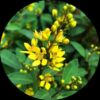- Empty cart.
- Continue Shopping
Bleeding Heart Red
₹140.00Current price is: ₹140.00. Original price was: ₹280.00.
https://youtu.be/LoeHUhlInrY?si=EWsEEDiH41GXxA7y
Genus : Glory Bower
“The Bleeding Heart Red Flower Plant is a stunning addition to any garden. With its striking red blooms resembling delicate hearts, it brings beauty and elegance to your outdoor space.”
Add to cart
The Bleeding Heart Red flower plant, scientifically known as Dicentra spectabilis, is a stunning perennial herbaceous plant that belongs to the family Fumariaceae. It is commonly referred to as Bleeding Heart due to the unique shape of its flowers, which resemble a heart with a drop of blood dripping from the bottom.
Description:
- Growth Habit: The Bleeding Heart Red flower plant is a clump-forming herbaceous perennial that typically grows to a height of 2-3 feet (60-90 cm) and spreads up to 2-3 feet (60-90 cm) in width.
- Foliage: The plant features attractive fern-like foliage that is deeply cut and typically blue-green in color. The leaves emerge in early spring and remain lush throughout the growing season.
- Flowers: The Bleeding Heart Red flower plant produces dangling, heart-shaped flowers that are deep red or pink in color. The flowers hang from arching stems, creating a graceful and elegant appearance. The flowers bloom in late spring to early summer and may continue blooming intermittently throughout the season.
- Fruit: After flowering, the plant produces small, fleshy, pod-like fruit that contain seeds.
- Dormancy: The Bleeding Heart Red flower plant goes dormant in the summer months, with the foliage dying back and the plant becoming dormant until the following spring.
Cultural Requirements:
- Light: The Bleeding Heart Red flower plant prefers partial to full shade, although it can tolerate some morning sun. Too much sun can cause the foliage to yellow and wither.
- Soil: The plant prefers well-draining, moist, and fertile soil with a slightly acidic to neutral pH. It is important to keep the soil consistently moist, especially during the growing season.
- Water: The Bleeding Heart Red flower plant requires regular watering to keep the soil consistently moist, but not waterlogged. Avoid letting the soil dry out completely, as this can cause stress to the plant.
- Temperature: The plant is hardy in USDA zones 3-9 and can tolerate cold temperatures, but may need protection from harsh winter conditions, especially in colder regions.
- Maintenance: The Bleeding Heart Red flower plant is relatively low-maintenance. Deadheading spent flowers and removing yellowing foliage can help maintain a tidy appearance. Mulching around the plant can help retain moisture in the soil and protect the plant during winter.
Uses:
- Ornamental: The Bleeding Heart Red flower plant is primarily grown for its ornamental value. Its unique heart-shaped flowers and delicate foliage make it a popular choice for shade gardens, woodland gardens, and border plantings.
- Cut flowers: The flowers of the Bleeding Heart Red flower plant are also used in floral arrangements, as they add a touch of elegance and drama to bouquets.
In conclusion, the Bleeding Heart Red flower plant is a striking perennial plant with heart-shaped flowers that adds beauty and charm to shade gardens. With proper care, it can thrive and become a focal point in any garden.
Add a review
Currently, we are not accepting new reviews













Reviews
There are no reviews yet